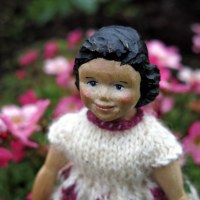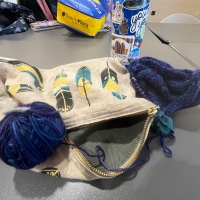Disappointed in Research

Oil flask, c. 550- 530 BCE, attributed to the Amasis Painter. Metropolitan Museum of Art, Public Domain, source.
Back in 2012, I was reading the Iliad with an online group, and I was amazed when I got to these lines about the famous Helen:
She [Iris] came on Helen in the chamber: she was weaving a great web,
a double folded cloak of crimson, and working into it the numerous struggles
of Trojans, breakers of horses, and bronze-armoured Achaeans,
struggles that they endured for her sake at the hands of the war god.
Iliad Book 3 (This translation by Caroline Alexander in The War That Killed Achilles)
You can read the posts I wrote back then about my reactions and questions, but let me sum up.
Those few lines describe highly skilled and valuable weaving, and yet they connect Helen to the everyday tasks that most women would have been doing. I want to know whether these lines reflect historical reality to any degree, or if they are just an exaggerated description to portray character or mood.
Think about how we represent cars in the movies. If a historian a thousand years from now saw footage of the Batmobile, he or she might think, “I know they had cars back then, but did anyone really have a car with ejector seats and automatic sliding plates that encased the car? Was that ever a reality, or just wishful thinking? And why show him driving at all? Is it to establish a commonality between this character and real people?” Those are the kinds of questions that this passage raises in my mind.
Some authors portray Helen’s weaving as evidence of her passivity, but to me it shows her processing the reality of war in her own way.
So when I saw a whole book about Helen, Helen of Troy: Goddess, Princess, Whore by Bettany Hughes, I was sure that in its 458 pages, my questions would be answered.
Hughes talks about the three aspects of Helen — “the Spartan princess with divine paternity fought over by the heroes in Greece,” “a demi-god, heroine, worshipped and honored… an integral part of the spiritual landscape,” and “the ‘strumpet’; the beautiful, libidinous creature irresistible to men.” (pp. 10, 11) She says she believes “that the template for Helen of Troy was provided by one of the rich Spartan queens who lived and died on the Greek mainland in the 13th century BC… a woman so blessed, so honored, so powerful, she appeared to walk with the gods. A mortal who, down the centuries, has become larger than life.” (p. 11) She says she wants to understand Helen as a real woman in a Bronze Age context.
I’m not that interested in Helen as an individual, but in what she represents of the women of her time, and especially textile workers, so I really wanted to read only that part of the book. But when I looked in the index, there was no mention of weaving or looms, so I had to just dig in.
The book basically follows a chronology of Helen’s life. Each chapter focuses on one life stage or event, but within the chapter, the spotlight swings wide to include a hodge-podge of Helen-related details — 14th-century religious recriminations, 19th-century paintings, recent archaeological finds, and the author’s own travels.
I learned a lot as I read, but overall the tone was just too gushy for me. A sample sentence:
“So as the Troy-bound lovers listen to the sounds of the night, and stroke each other’s arms, as the waves lap the boat’s side and Helen pushes her ‘loose and lustrous hair’ back out of her eyes, the picture of mortal bliss, there is a dreadful inevitability about what is going to happen next.” (p. 171)
For a lot of it, you could substitute “Beyoncé” or “Kim Kardashian” for “Helen”, and you would have a tabloid-worthy article. I read it all, though, skimming the flowery prose for nuggets of information. Some ideas that were briefly mentioned piqued my interest (for example that the story reflects a time that male gods were overtaking matriarchal religions) but were not gone into.
Finally I got to the chapter on the siege of Troy, Chapter 27, Helen — Destroyer of Cities. Helen’s former husband and her current lover are going to fight one-on-one to determine the outcome of the war.
And this is what I read:
When we meet Helen face to face in the Iliad, in Book 3, she is brought in to survey the men fighting for her on the plains of Troy…So there is Helen, famous, beautiful, and desired. A prize for Trojans and Greeks alike. She is watching men slug it out for here, just as they did twenty years before…the need to possess the ultimate beauty will spur Greeks and Trojans alike to a ruthless odium. (p. 205)
What??? As we see in the passage I quoted above, when we meet Helen she is weaving. Hughes just leaves that part out and skips to the old men of Troy declaring that Helen is indeed worth fighting for. (She leaves out the lines where they say, “Nevertheless, let the Greeks take her and go to stop further trouble around here.”)
Hughes does not mention the weaving until five chapters later in Home to Sparta. She says:
While at Troy Homer tells us that Helen embarked on an intricate tapestry – a never-ending creation that told the tales of heroes and of war. .. Helen might have completed her own epic work of fabrication back in Troy, but now there would be a whir and a clatter as others settled themselves at the loom to begin their own version of the life of the Spartan Queen. (pp. 233, 234)
I was disappointed that there wasn’t more information given, and went back and looked at the Iliad again, and was surprised that the weaving description was only four lines long! In the time since I first read it, it had grown in my mind to be a couple of pages at least.
Finally, in Appendix Five, Royal Purple – The Colour of Congealed Blood, Hughes goes into more detail about Helen weaving, but she focuses on her use of luxurious purple, a dye from murex snails. (Hughes even went diving for snails herself.) And then:
There is no question that aristocratic women in this world would have sat and produced cloth. The intricate and delicate pieces they made might end up as gifts for visiting diplomats, might be worn in grand public ceremonies or might perhaps be offered to the gods, used to dress cult statues ceremonially. Hand-woven, pieces like this could take years to produce. Only the nobility devoted so many hours to so rare an activity. (p. 341)
Well, now I was disappointed for a few more reasons. One, no source is given for this information, so I can’t see where to go from here. Two, Mycenaean weaving was quite the specialized industry, involving a large percent of the population. It wasn’t a rare activity practiced only by the nobility.
I have had a lot of trouble writing this post, because how do you write about something you didn’t find?
Ordinarily, I could recognize that it might be too much to ask to have some textile history included (Well no, not really. I never think that’s too much to ask), but in a book that purports to tell us all about Helen, a book that spends a page on ink recipes in antiquity or a 19th century French artist’s painting of Helen with no face, it seems like there would be room for more information on such a basic activity.
In the Introduction, Hughes writes: “Because Helen is such an alluring figure of fantasy, because she dazzles as she goes, she can make it hard to see the women of substance who walked through the Bronze Age palaces of the Eastern Mediterranean.” (p. 11)
She concludes with, “Helen is an archetype. Men fall for her, have sex with her, and then, when terrible things happen, it is she who gets the blame.” (p. 311)
I think that she missed an opportunity to show another aspect of Helen’s life, to tell more about the real women of the Bronze Age, and how Helen might have related to them.
















I can imagine wealthy women being taught to weave, as wealthy daughters in the US were expected to learn needlework skills. (And rougher textile work being left for paid or slave labor…) But that is just my imagination. I understand why you would like some evidence.
I do think she would have known how to weave. My quibble was with Hughes saying only the nobility had time for intricate weaving. There is a lot of evidence in the Linear B tablets that weaving was highly specialized, with spinning, different types of weaving, and decorating being done by different people, and that the government oversaw the system and had quotas.
It seemed to me that Hughes was using the weaving passage to set Helen up as unique, and I saw it as an opportunity to show Helen in relation to a broader group of people. Maybe too picky of me.
Not too picky. It’s an important point. Either there was a weaving industry for fine work or there was not. You know there was. It rankles me to see similar relative to quilting. If the evidence does not support the statements, or worse yet contradicts it, they have at best mis-stated.
I often seeing romanticized things said about quilting, a lot of it not true, not supported. It is frustrating, and there seems to be few remedies.
Hmm, sounds like Hughes likes fantasy as well……. Quite the slog to find not much substance. Too bad.
There was a lot of information I didn’t know before, but it did seem heavily weighted in favor of “Pretty girls get treated so unfairly.” Helen’s golden hair must have been mentioned at least once in every chapter. I think I will stick to dry research from now on.
Since I never knew, I decided to investigate in 5 minutes or less just what happened to Helen. Here’s what I found on the New World Encyclopedia:
According to Pausanias the geographer (3.19.10.):
“The account of the Rhodians is different. They say that when Menelaus was dead, and Orestes still a wanderer, Helen was driven out by Nicostratus and Megapenthes and came to Rhodes, where she had a friend in Polyxo, the wife of Tlepolemus. For Polyxo, they say, was an Argive by descent, and when she was already married to Tlepolemus shared his flight to Rhodes. At the time she was queen of the island, having been left with an orphan boy. They say that this Polyxo desired to avenge the death of Tlepolemus on Helen, now that she had her in her power. So she sent against her when she was bathing handmaidens dressed up as Furies, who seized Helen and hanged her on a tree, and for this reason the Rhodians have a sanctuary of Helen of the Tree.”
Tlepolemus was a son of Heracles and Astyoche. Astyoche was a daughter of Phylas, King of Ephyra who was killed by Heracles. Tlepolemus was killed by Sarpedon on the first day of fighting in the Iliad. Nicostratus was a son of Menelaus by his concubine Pieris, an Aetolian slave. Megapenthes was a son of Menelaus by his concubine Tereis, no further origin.”
Now I know where soap opera plots come from. Helen’s husband’s children obviously had no fond memories of her.
Yes, a lot of that was in the book too. It is part of the reason they think Helen may have originally been a nature goddess – there are shrines to her all over the place, and some of the stories told at them seem very different from Helen of Troy. So maybe the shrine was there first and as the centuries went by, its story blended with a different Helen.
Also, for those preferring a happy ending, there is a version where one of the gods whisked her away and put her in the stars with her brothers Castor and Pollux.
But you are right about the soap opera plots. Most of the people in those old Greek stories seem pretty miserable to me.
I have more to say on this, but for now, before I forget, I came across this article recently and bookmarked it to pass on to you: https://www.academia.edu/8923975/Towards_an_Economic_History_of_Textile_Manufacturing_and_Trade_in_the_Roman_World
Thanks! I started reading it and that is my kind of article! Also, that Ancient Textiles series that you alerted me to when you were at a conference, has come down in price from about $50 a book to $15, for the e-books. So I have a new stack of reading material!
Hi. I am nominating you for the Premio Dardos Award. Go here: http://sberrypa.com/2015/05/22/premio-dardos-award/. If you decline for any reason, I will not be offended. I love your unique blog and the information that you provide.
What a disappointing book! It sounds as if it was a letdown on a number of levels–fantasy/romance/historical fiction passing itself off as research. I think your review is pretty kind and gentle, considering!
Well, there was a lot of research there and I learned a lot. I just didn’t like the tone of “Don’t hate Helen because she’s beautiful.” Who knew that I actually prefer reading things like, “There were 37 spindle whorls in storage area 3c, 14 of which weighed 23 grams…” etc.
The article from trophos was indeed very interesting. thanks.
I can see why you’re disappointed. I have been thinking a lot on how women’s work is neglected in historical sciences. It’s a shame, and most of all, it shows such an ignorance about what women’s work was and is, and the meaning of it. Yes, I do have E.W. Barber’s Women’s Work. Luckily there is that kind of research also.
And it was especially disappointing in a book that was about a woman, by a woman! How can you leave out the aspects that connect her to other women of her time, and focus only on what sets her apart!
I read Barber’s work years ago but I do not own it. I am waiting until I see it in the used book store. 🙂 But I am enjoying the Ancient Textiles series which has research writing on all kinds of little textile niches.
How frustrating! I agree with Barbro on this… and the book sounds like quite a mix of swashbuckling romance novel and research work.
I know from my own perusal- there are not a lot of references to weaving in poetry. Glad to hear about this one! Jane
grr – I just posted a long comment that got lost to the wiles of wordpress, BOO. The long and short of it was that a vast amount of circumstantial evidence points to Helen-as-excellent-weaver likely being an accurate reflection of historical reality – e.g. all Homer’s great women are great weavers, the stories of Philomela (which actually gives us another comparable narrative tapestry) and Arachne, popular textile tokens scenes out of comedies and the novels of late antiquity… I suspect these elite-woven textiles served as luxury goods for guest gifts and religious rituals, alongside the more utilitarian or ‘mass market’ textiles you could buy at shops (but I completely defer to you on the question of textile trade, especially in the Bronze Age!). Anyway, you might want to look at Barbara Clayton’s ‘Penelopean Poetics’ (especially ch.2), and I’ll send you a few articles that will at least provide further bibliography, if not exactly what you’re looking for. And I’m going to ctrl-c this comment before I hit post 😉
Thank you for the info! I will hunt up Penelopean Poetics, and look forward to the article.
All the more reason you would think Hughes would have given more notice to this part of Helen’s life, to show how she compared to other women. I think I am going to stay away from Discovery Channel authors and stick to the Ancient Textiles series.
Hi TextileRanger! – first I want to thank you for your appreciation of my newly started blog – encouragement is really precious when you are new to something!!
I also want to add how excited I am to find your blog – it’s fascinating. I’m so intrigued to find all this stuff about Helen and her weaving. Many many years ago (err 40??), I studied Greek and Latin, so I’ve read the whole of the Iliad and Odyssey in the original. Sadly, I found it pretty boring at the time – my tutors didn’t focus on interesting stuff like the weaving etc.
Anyhow, reading your articles has encouraged me to get my old classical books out. I cannot add much to your discussions I’m afraid – my books are very old. I looked up megaron, for example, in my Homeric dictionary (dated 1885!!), and it tells me it can be the men’s dining hall, chief room of the house, women’s apartment, housekeeper’s apartment, sleeping apartment. Hedging all their bets, I think, there!
In the Odyssey (bk 15, 105 and 126-8) Helen gives one of her woven robes to Telemachus, and I think this may be what Bettany Hughes is referring to when she says they are given as gifts.
I do recommend Elizabeth Wayland Barber’s Women’s Work.The first 20,000 years – she does mention Helen’s weaving (and spinning) in several chapters, and would appear to agree with you that Helen is not unique with her weaving skills.
I have kept my Homeric books over these many years, even though I got rid of all my other classical books, because I always thought I would return to read Homer in his original Greek one day – thank you, TextileRanger, you might just be the prompt I need to get on with this project!
I am glad to find someone else who is interested in all these details too. If you do get your Homer out, I highly recommend going over to The Dancing Professor – for the last three years, a few of us have read a classic together, and she has led us with helpful and readable commentary on each book. Here is the first post for the Iliad. She was using the Mitchell version as one she had not yet read.
I don’t always keep up with the whole discussion, but I do learn a lot, and it has sent me off on textile-related tangents. Currently I am interested in Mycenaean textile workshops and in Viking sails. Little bits of information show up here and there and I try to put them together into a coherent picture in my mind.
Your blog is amazing! I agree with one of your commenters who said that you hit the right balance between words and pictures, and I would add to that that you hit the right balance between facts and feelings. I look forward to catching up with you and reading all your posts.
Thank you so very much for your most generous and encouraging comments. I really appreciate that. I will definitely check out The Dancing Professor (thank you for link)….but it might take me a little while to go back to Homer properly…..truth is I found it very hard and would need to do a lot of work to get my Greek up to scratch again! Perhaps this winter, when I’m stuck inside more. Homer is definitely worth the effort.
The Dancing Professor reads Greek, but the rest of us read them in English, and still needed lots of explanations. I grew up reading Greek myths but never realized how very different their mindset was from ours. It was eye-opening!
Hi there, I am very late to the party, I’m afraid, but wanted to add my tuppence worth re Bettany Hughes. I saw a lecture between her and Natalie Haynes and the subject of weaving came up and she was very dismissive of finds of loom weights as, to her, they indicated a women enslaved. Perhaps that is where her lack of information comes from – she doesn’t want to give voice to an era where she feels women were trapped and made to produce beautiful cloth that was then given away for politics sake?
Hello, thank you for this interesting comment!
I had to go back and look at that post — I didn’t even remember reading that book, much less posting about it. 🙂 It’s interesting that that author thinks of loom weights as an indication of women enslaved. From my limited readings in weaving history, I know that many enslaved women did weave, but it is also true that unenslaved women wove, that enslaved people did all sorts of work, and that many men were involved in the textile trade too. I wonder if there was any area of industry that did not use enslaved people in some fashion. So to me that is more of a reason to really consider textiles and their important part in the lives of many people.
Thanks again for telling me about that author’s insights!